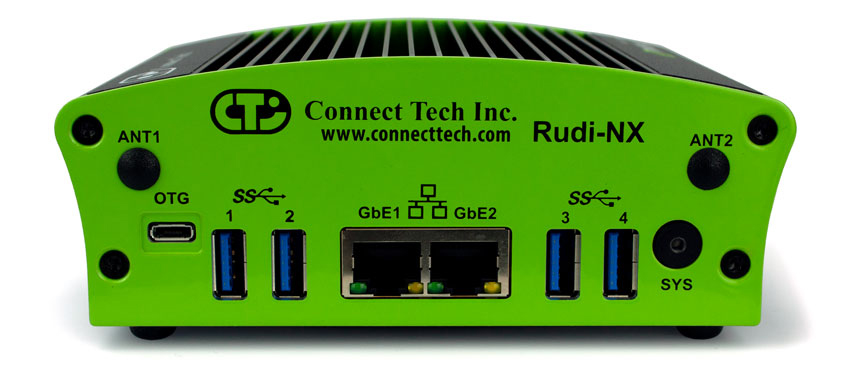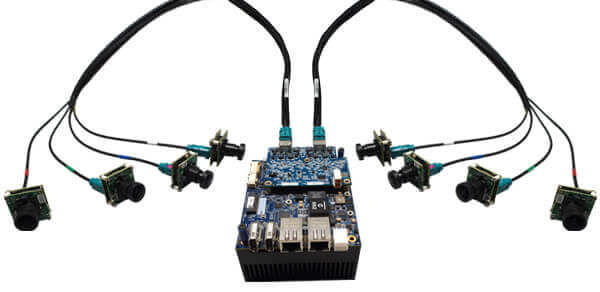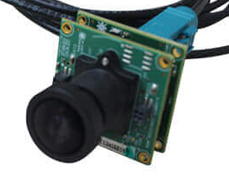
In the quest for safer roads, the automotive industry is increasingly adopting advanced technology to minimize accidents. The path to a fully autonomous car requires massive amounts of sensory information to be analyzed and reacted upon in real time, with almost no margin for error. With strict safety regulatory hurdles standing in the way of mass consumer adoption, designing and powering these Advanced Driver Assistance Systems (ADAS) takes a meticulous attention to design detail.
NEXT GENERATION SENSOR INTEGRATION
While longer cable lengths can be used, Ethernet sensors introduce avoidable latency due to the network protocol used to send the image data. As an alternative for automotive sensor integration and data intake, Maxim Integrated developed the next generation of SerDes (serializer/deserializer) technology that would transmit large amounts of high resolution digital video data over a single data line: Gigabit Multimedia Serial Link (GMSL). GMSL is a compression-free alternative to Ethernet, delivering high resolution video at faster data rates, lower cabling costs, and better electromagnetic compatibility (important for avoiding interference). Offering the ability to rapidly build prototype and evaluation systems for multi-camera ADAS applications, GMSL technology can easily be scaled to meet automotive production needs.
Since it first hit the market in 2014, the NVIDIA Jetson platform has grown to dominate the autonomous machine market with its advanced GPU technology. Ideal for vision applications, the NVIDIA Jetson lineup of GPGPUs have the ability to run multiple neural networks in parallel – making them the ideal processing engine for autonomous vehicles.
REAL WORLD USE OF GMSL IN AUTOMOTIVE
Since the invention Maxim’s GMSL interface, we have worked with many large automotive manufacturers looking to develop and test edge solutions to run more advanced ADAS programs. Our work with OEMs has led to the development of many standard GMSL solutions that allow flexible deployment options for anyone looking to adopt the standard.
When looking to develop the in-vehicle compute module to power the ADAS programs, the first hurdle is to determine sensor placement, cabling, and how each camera will be powered. While any GMSL camera should work with some software development, we have tested, verified, and developed software integration packages for the following GMSL cameras:
Each camera utilizes a 50 Ohm Coaxial cable that provides PoC (Power over Coax) to allow for flexibility in cable routing and ease of installation in automotive applications.
DEPLOYMENT OPTIONS FOR EDGE GMSL SOLUTIONS
When searching for hardware solutions to run your ADAS application, there are two paths to consider: using a complete integrated edge device, or building your own hardware device.
Integrated System

Edge devices, like the Rudi-NX, come equipped with standard I/O inputs and allow for plug and play deployment of your application. With thermal and enclosure design completed, implementing a system will drastically reduce cost and development time of your project. Each Rudi-NX will connect up to 4 GMSL cameras. Learn more about Rudi-NX here.
Embedded Components
For applications that have restrictions on size or implementation challenges, it is oftentimes necessary to design the edge device to fit the applications criteria. In order to optimize hardware costs, using standard embedded components can rapidly get your project to market. We have developed a GMSL sub-system that utilizes embedded hardware components and integrates up to 8 GMSL cameras. The below figures depict how this sub-system is built:


Click here for information on the Rogue Carrier, and here for information on the GMSL breakout board.
Customized Solutions
When looking at hardware for your ADAS system, the scenario may arise where off the shelf products don’t meet your applications requirements. In this case, we suggest beginning by determining if any of our off the shelf products can be modified to suit. Our ability to rapidly modify standard products exclusively for your project will give you the best of both worlds: hardware tailored to your application and fast turnaround time of manufacturing.
If a fully customized solution is required, ensuring you’re working with a company whose engineering team has experience designing and integrating GMSL technology is vital. Ask us about customizing GMSL solutions, and view our processes for designing and manufacturing custom solutions here.
STANDARD GMSL SOLUTIONS
| Product Name | Details | NVIDIA Module | Part Number | GMSL Connections |
| Rudi-NX | A fully integrated system for plug and play edge deployment | Xavier NX, Orin NX | ESG602, ESG605 | 4 |
| Rogue + GMSL Sub System | A pre-flashed and integration ready sub-system that includes: AGX Xavier module, Rogue carrier board, GMSL expansion board, and thermal solution (active or passive) | AGX Xavier, AGX Orin | AGX101, AGX102 (Basic Rogue Carrier Boards)
Contact Sales for variations |
8 |
| Xavier GMSL Camera Platform (Production) | An expansion board that enables 8 PoE GMSL cameras | AGX Xavier, AGX Orin | JCB002 | 8 |
| Astro Carrier Board | A small footprint carrier board | TX2, TX2i or TX1 | ASG012 | 2 |
HAVE QUESTIONS?
Contact Connect Tech Sales with any questions about GMSL or hardware solutions for automotive applications.
Article updated from Original on Dec 1, 2023


